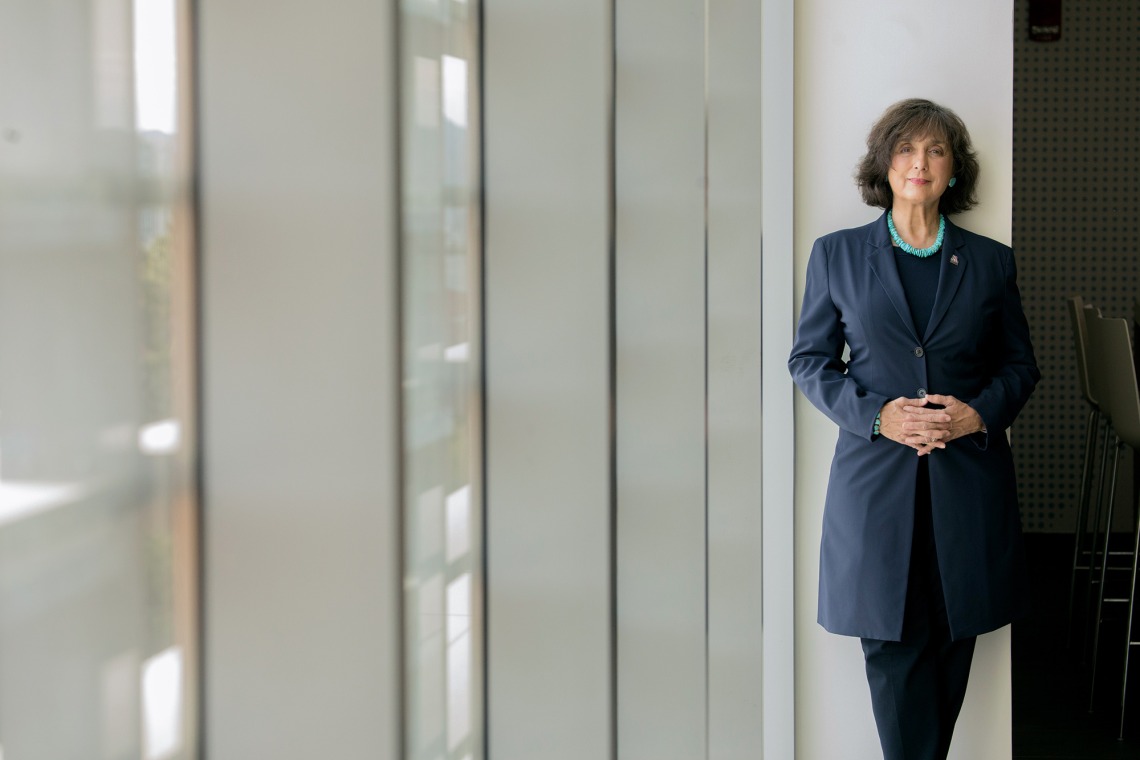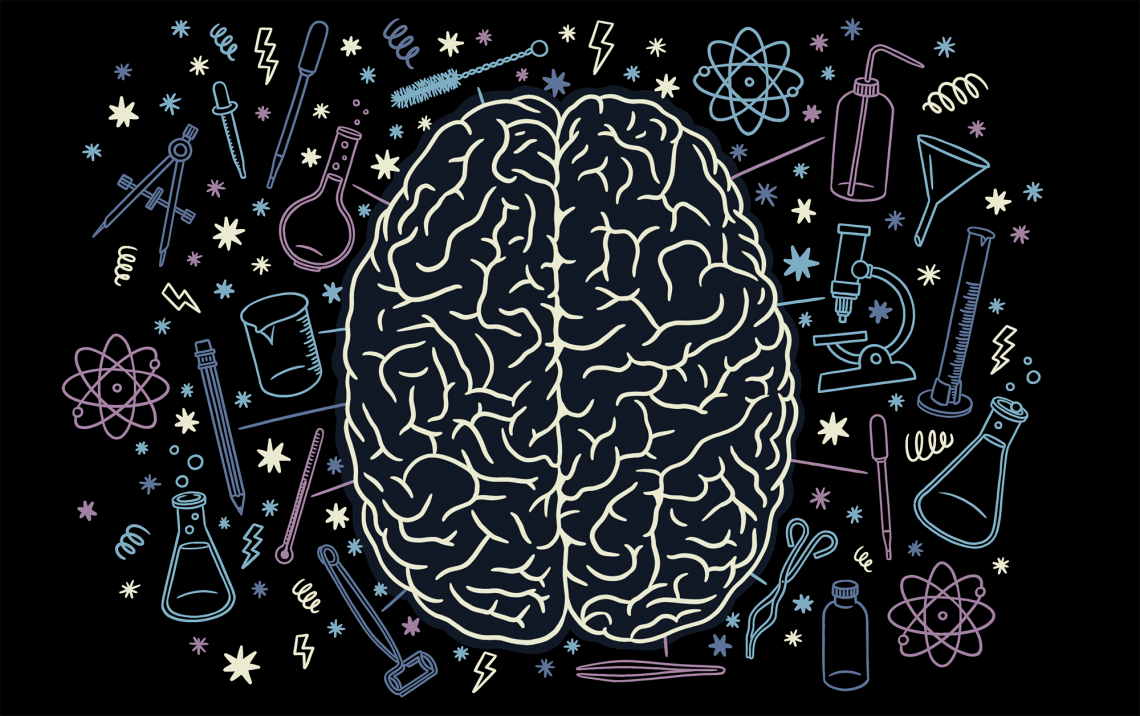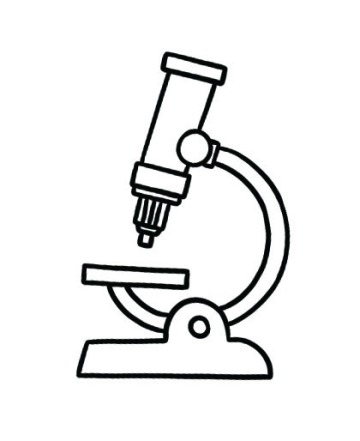Vibrant Brains that Last a Lifetime
Alumna returns to UA to lead Center for Innovation in Brain Science

Roberta Diaz Brinton, Ph.D., ’79 ’81 ’84, works high above the University of Arizona campus in a sleek new building, Bioscience Research Laboratories, with sweeping views of the courtyard garden below.
Brinton is a renowned neuroscientist and Alzheimer’s disease expert who has won several awards — including the Presidential Citizens Medal, awarded by President Obama — and garnered millions of dollars in grants for her work studying Alzheimer’s in women.
Three years ago, the University of Arizona lured her back from the University of Southern California to lead a bold new enterprise, the Center for Innovation in Brain Science.
“I was happy at USC,” she says. “I had a view of the ocean. I had no reason to move. But I was willing to pull up stakes for a grand challenge, bold thinking and innovation.
“That’s the UA phenotype that created me. And here I am!”
“The grand challenge we are addressing is that in the 21st century, there is not a single cure for neurodegenerative diseases,” Brinton says. There are treatments that can diminish the symptoms of the disease, but they do not cure it. The disease marches onward.
She adds, “Our mission is to create innovations in brain science of the future for those who need a cure today. And our vision is vibrant brains that last a lifetime.”
She has recruited a diverse team of experts — experts in Alzheimer’s, Parkinson’s disease, Lou Gehrig’s disease (also called amyotrophic lateral sclerosis, or ALS) and multiple sclerosis as well as brain bioenergetics, therapeutic development, big data analytics and precision clinical trials — all working side by side. She challenges them to put “all brains on deck” in their search for treatments for these neurodegenerative diseases.
Working in eight teams, the center’s scientists — and a small army of undergrads, graduate students and post-doctoral researchers — are searching for new treatments for brain diseases, deploying specialties from big data and precision medicine to molecular genetics.
“Our goal is to deliver cures,” Brinton says. “We come to work every day committed to this mission. It’s a grand challenge we are committed to solving.”
Brinton completed her post-doctoral fellowship at Rockefeller University in New York, where she was invited to observe an estrogen trial for women with Alzheimer’s.
“It was transformative for me,” she says. The experience gave her an insight into the disease that helps shape her work today.
Brinton recalls one trial participant in particular with whom she spent many hours. The woman, a retired psychologist, Dr. A., had a remarkable memory for things past.
“She would tell me about feuds between Freud and Jung, and about Freud and Adler. She would regale me with fascinating stories.
“I would take her back to her room. One evening I closed the door, waited 30 seconds, knocked, then went back in and said, ‘Dr. A, do you remember me?’ Her reply, ‘I’m so sorry, should I?’
“She could not remember me for 30 seconds, and I have remembered her for 30 years.” Despite her detailed memories of long ago, Brinton says, Dr. A. was “unable to recall the experience of me — she was unable to encode new information, new experiences. She could not recall what she had not encoded.”
Brinton realized, “The early stage of Alzheimer’s is not a memory problem. It’s a brain-cannot-encode-new-information problem.”
That insight has shaped her career and put her on a path to translational science to target the initiating causes of Alzheimer’s — using what she has learned about the brain in the lab to develop treatments for real-life patients.

Why Women?
Center for Innovation in Brain Science receives a $5.9 million grant to study sex-related differences in Alzheimer’s disease.
Worldwide, 47 million people are living with Alzheimer’s disease and other dementias — including nearly 6 million in the United States. And Alzheimer’s hits women more often than men: Nearly two-thirds of Americans who have Alzheimer’s are women, according to the Alzheimer’s Association.
The neurodegenerative disorder’s most common form, called late-onset Alzheimer’s disease, occurs after age 65. However, “We know Alzheimer’s disease can start 10 to 20 years before diagnosis,” says Roberta Diaz Brinton, Ph.D., a leading expert in Alzheimer’s biology and therapeutic development and inaugural director of the Center for Innovation in Brain Science at the University of Arizona Health Sciences.
“Further, we know that there is a sex difference in the prevalence of the disease. Curing the disease requires that we discover the earliest events in the brain in both women and men that lead to emergence of disease symptoms later in life.”
Recently, the National Institute on Aging, part of the National Institutes of Health, awarded Brinton a five-year, $5.9 million grant to do exactly that. The goal of the project is to identify the sex-specific mechanisms driving Alzheimer’s and to translate the discoveries into novel therapeutics to prevent, delay and potentially reverse its course in both women and men. Currently, no treatments exist to stop or reverse Alzheimer’s.
As Alzheimer’s progresses, women with the disease exhibit a broader range of dementia-related behaviors and greater cognitive decline than men. Studies have found evidence that women’s brains are more vulnerable to Alzheimer’s than men’s, but the reasons are unknown. Brinton’s study aims to define the biochemical pathways that lead to sex differences in the disease.
“Outcomes of our research will generate therapeutic targets for precision medicine interventions for both women and men during the early stage of Alzheimer’s, when the potential to prevent, delay and reverse disease progression is greatest,” Brinton says.
Brinton has assembled a research team with expertise spanning brain imaging, mitochondrial bioenergetics, molecular genetics, sex differences and computational systems biology.
Brinton will serve as the team’s primary director. Brain imaging will be led by Lisa Mosconi, associate director of the Alzheimer’s Prevention Clinic and associate professor of neuroscience in neurology at Weill Cornell Medical College. The bioenergetic analyses will be led by Fei Yin, assistant professor in the UA department of pharmacology and toxicology and associate director of the Center for Innovation in Brain Science.
Computational systems biology will be led by Rui Chang, associate professor with the UA department of neurology and associate director of computational systems biology at the Center for Innovation in Brain Science. Brinton and Chang also serve as co-principal investigators on a collaborative effort to identify metabolic dysfunction in Alzheimer’s in a study with Duke University also funded by the National Institute on Aging.
“Dr. Brinton’s vision and determination have attracted a multitalented team of researchers who are working together to discover the keys to understanding the role of gender in the development and progression of Alzheimer’s disease,” says UA President Robert C. Robbins.
“As the average life span continues to increase, improving health, happiness and quality of life is crucial, and the UA’s new strategic plan prioritizes global leadership in precision medicine that could prevent and potentially reverse the course of this devastating disease.”
All Brains On Deck
Neuroscientist Roberta Diaz Brinton sat down with Arizona Alumni Magazine to talk about the transformative work happening at the Center for Innovation in Brain Science.
Why is the University of Arizona well positioned for the innovative work at the center?
A: Our focus is on age-associated neurodegenerative diseases, and that fits very well with the expertise that exists at the University of Arizona in aging, like Carol Barnes and Lee Ryan at the Evelyn F. McKnight Brain Institute, and Janko Nikolich-Zugich and Mindy Fain at the Arizona Center on Aging. I’ve recruited experts here in Alzheimer’s, Parkinson’s, ALS and multiple sclerosis. And the UA has amazing expertise in data science and statistical analyses to design innovative clinical trials.
What is the interplay between the center’s research and big data?
A: We have expertise in the bioenergetic system of the brain and computational systems biology. This allows us to start bringing in all our data — data from human beings, data from our experimental work, data from our clinical trials — and begin to ask questions of that data.

Precision medicine?
A: Our goal is to develop therapeutics that promote the health of the nervous system and move away from the one-size-fits-all model. Our precision therapeutic approach will generate the right therapeutics at the right time. The idea that one therapy works for all people, all the time, has not worked and is unlikely to work. We need a portfolio of treatments that can be deployed to combat the disease based on gender, genotype and stage of the disease.
How does Tucson fit into the picture?
A: Arizona and Tucson are living laboratories of successful, optimal aging and of vulnerable aging: living laboratories for the differences that can emerge based on our genetic heritage, our ethnicity and our lifestyles that can put the nervous system at risk for developing age-associated neurodegenerative diseases.
What’s the societal impact?
A: If you look at people over the age of 65, you’ll find that, on average, 11 percent of them are predicted to develop Alzheimer’s disease. The risk for developing Parkinson’s, age-associated multiple sclerosis or ALS is less than Alzheimer’s, but the impact on people living with the these diseases is just as great. People can live with Alzheimer’s, Parkinson’s or multiple sclerosis for decades. They live with it, their families live with it, their communities live with it, their nation lives with it.
And the number of people over age 65 is growing — not only in the U.S. but throughout the world. We’ve been successful in expanding life span; now we need to expand the healthy life span of the brain.
What has your work uncovered about the aging process?
A: We typically think of aging as a linear decline to death. The work that is being done in the center shows that aging is actually a series of steps and adaptations that, when you put them all together, look linear — but they’re not. Aging is a step-by-step, adaptation-to-adaptation process.
How does this inform your research?
A: Each of these neurodegenerative diseases has what’s called a prodromal phase — a phase where the nervous system undergoes step transitions. During this phase, the nervous system is sending out an early signal: “I’m changing. I’m not able to keep up.” Our goal, and we’ve been successful at least in Alzheimer’s, is to detect that earliest stage — the point at which the nervous system is saying, “Help.” Detecting the earliest stage for each of these diseases and the mechanisms driving the stage gives us a therapeutic advantage. Intervening at the earliest stage means we have a fighting chance to reverse the disease, to restore brain health.
What is the brain’s energetic role in aging?
A: The brain is the most energetically demanding organ of the body. It weighs 2 percent of the bodyweight and consumes 20 percent of the fuel to keep us alive and regulate every organ of the body. So, our focus is on the energy system of the brain as its point of vulnerability. Decline in the brain’s ability to generate energy will result in a bioenergetic crisis that can lead to neurodegenerative disease.
What do early signs of an energy crisis look like? What about memory?
A: When you look at one of the early signs of an impending energy crisis in Alzheimer’s, the brain is no longer able to encode new information. It looks like someone is not remembering, but the reality is that the energy required to process new information, generate new synapses, generate new neurons to create the memory isn’t there. Ultimately there is a loss of existing memories, but that comes later in the disease.
What is your strategy for achieving a cure?
A: In each of these age-associated neurodegenerative diseases, time is on our side. In Alzheimer’s disease, the prodromal phase is 10 to 20 years. In Parkinson’s and multiple sclerosis, it is a bit less — about five to 10 years. In ALS, it is very short. But in each of these devastating diseases, we have time to intervene before it is too late.
Imagine if we can detect these diseases very early, if we’re able to understand each of the transitions leading to disease. Now imagine if we could prevent entry into the first transition, prevent moving to the next stage of the disease. Now imagine if we could actually walk back those steps to cure the disease. That’s our goal.
How does that work?
A: We’re working on understanding “where are you in this disease process?” Are you at Stage 1, Stage 2, 3? We need to therapeutically intervene based on the stage of the disease and move you back a stage. Then, once that has been achieved, change the therapeutics to move you back another stage, all the way back to health. It’s a completely different and innovative way of conceptualizing the therapeutic strategy.
We also look at how a person develops the disease. Right now, therapeutically, it doesn’t matter why a person developed Alzheimer’s or Parkinson’s or multiple sclerosis or ALS. But to us it matters. Because if you’ve developed, for example, Alzheimer’s disease or Parkinson’s from traumatic brain injury, that’s very different than developing either disease from an energy crisis.
Precision medicine is critical to curing neurodegenerative diseases.
How about therapeutics for regeneration?
A: I’m very excited about developing therapeutics to promote regeneration of the degenerated brain. We have preliminary data that we’re now moving into clinical trials. This work started for me as a graduate student at the University of Arizona. At the time, no one anticipated that the human brain could regenerate itself. We discovered that the molecule allopregnanolone, Allo for short, can promote regeneration in the Alzheimer’s brain. The Alzheimer’s Drug Discovery Foundation was an early supporter of our innovative regenerative therapeutic approach. It ultimately led to funding from the National Institute on Aging to conduct translational research and early-stage clinical research to develop Allo as a regenerative therapeutic for Alzheimer’s. The Alzheimer’s Drug Discovery Foundation continues to support our research along with the Alzheimer’s Association. Together, we are advancing clinical testing of Allo in people with Alzheimer’s disease.
How can we improve health, happiness and quality of life during our older years?
A: The key is to maintain energy production in the brain. One way to do that is exercise and diet. Even if you don’t go the gym, you can still get a lot of exercise by building it into your daily life. We have to say, “I’m not taking the elevator. I’m taking the stairs. I’m not going to push for the automatic open. I’m going to open that heavy door. I’m going to park my car at the back of the parking lot and haul those groceries to the car.” You can build choices for health in everything you do, all day. And, if what you are eating won’t look good on you on the outside, chances are it doesn’t help you on the inside.
Last thoughts?
A: At the Center for Innovation in Brain Science, we will achieve our mission of creating innovations in brain science of the future for those who need a cure today. We’re at the right university at the right time with the right team and the right colleagues. No other university has what we have, and I am so happy, grateful and excited to be at the University of Arizona, and so is every other member of the center team. Sursum — Upward!
